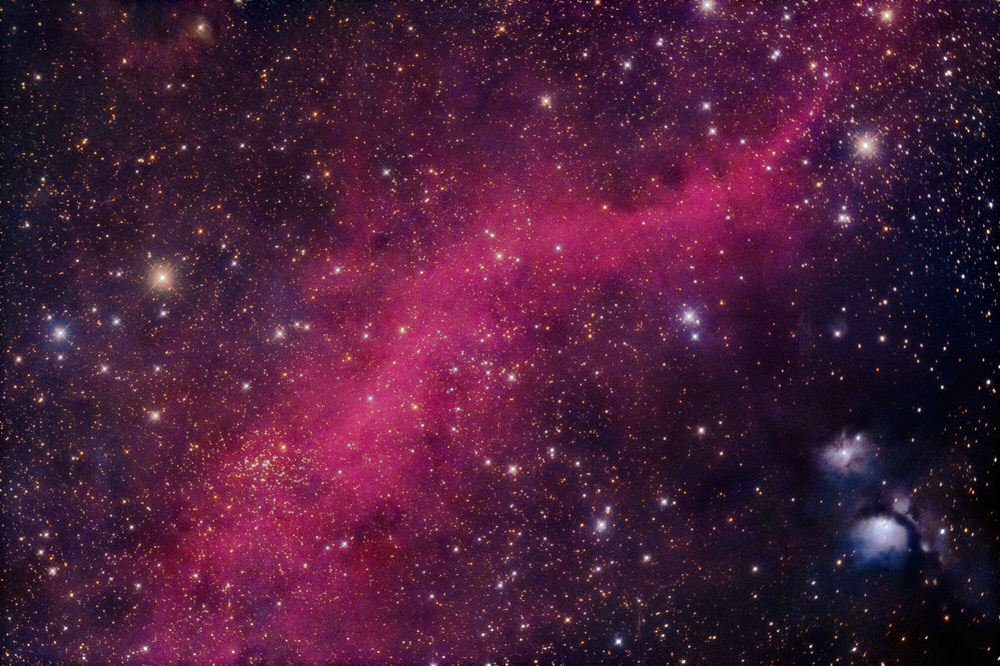
Barnard's Loop was officially discovered by E.E. Barnard around 1900, although there are some indications that William Herschel already had seen this nebula in 1786. The image above shows only the northernmost part of this nebulous ring which encircles the Orion complex, a large cloud of gas and dust centered on the Great Orion Nebula M42/M43.
Barnard's Loop is probably the ionized inner surface of a hydrogen cloud enveloping the Orion complex and the Orion OB1 association, a group of young and very hot stars of the spectral types O and B. This large bubble was probably formed about 3 million years ago by a series of supernova explosions.
The reflexion nebula M78 (lower right corner) is the brightest of its kind in the sky. As a reflection nebula, M78 is a cloud of interstellar dust which shines in the reflected and scattered light of bright blue (early B-type) stars, the brightest of them have 10th visual apparent magnitude.
M78 also belongs to the Orion complex, and is located at a distance of about 1,600 light years. At that distance, M78 measures almost 4 light years in diameter. M78 is only the designation of the brightest part of this dust cloud which includes NGC 2067 (close northwest, separated by a dark lane (large, towards the northeast).
Another deep-sky object found in this image is NGC 2112, an open star cluster located on Barnard's Loop (lower left of the image's center).
 Orion East, zoom lens photograph.
Orion East, zoom lens photograph.
 M78, Newtonian CCD-image.
M78, Newtonian CCD-image.
Exposure Data